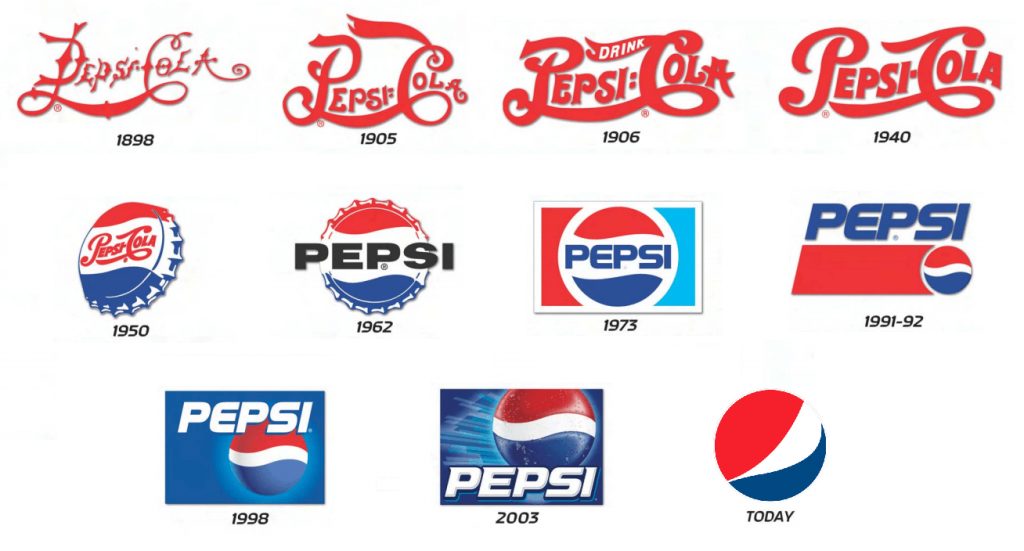
Branding: where marketing meets design in a creative flirtation from which lasting business results are born. At least that’s as it should be. But are brands and their existential manifestation becoming dislocated from their commercial objectives?
Our research certainly suggests as much. 91% of key decision makers don’t primarily think of ‘brand’ as a financial construct. 44% think ‘marketing’ is what the customer sees.
Perhaps it shouldn’t be so surprising. We’re living in an era where our unhealthy obsession with aesthetics is winning out over ethics, noise is drowning out signal, and style is increasingly blindsiding substance.
But of what possible value can branding be to organisations if it isn’t a consumer-facing articulation of business strategy? If our only focus is on how we look, we can wander down some very dark and dangerous paths.
A pathological focus on the small details at the expense of the whole
It’s been said a million times before, but it bears repeating; a brand is not a logo. Neither is it some 60-page brand book about your brand’s essence, values, personality, spirit animal or favourite TikToker. Nor is it a brand key, a brand pyramid, a brand ever-decreasing-circle or a brand floating tesseract.
Yes, the craft of visual (and audio and vocal) identity is part of it, but how many weeks and months get eaten up in these small details whilst strategic brand planning is relegated to a three-day free-for-all from which the most noteworthy outcome is a photo op with the brand mascot?
How many conversations, articles, conference presentations and award ceremonies start and end with ‘look & feel’ rather than ‘profit & loss’.
It’s not that the visual identity of a brand isn’t important, but when 49% of marketers think the visual identity of a brand actually is the brand, without any sense of the positioning or proposition to which it needs to be anchored, or the long-term process required to build it, we all need to cry foul.
And what of rebrands? How many of these facelifts are actually required?
Do you know how many times Coca-Cola has changed its logo since 1941? Bar a minor touch-up here and there it hasn’t; same logo since the days of Pearl Harbor. Pepsi by contrast has had an update every 6.66 years, the most famous one costing $1million, but which creator Peter Arnell later described as ‘bullshit’.

Brand changes are not just expensive, they take up valuable marketing headspace, even for smaller companies. Anyone who has tried to get so much as a blog signed off on in a mid-sized business will be able to guess at how much of an elongated pain-fest an entire rebrand can be.
It isn’t that design isn’t crucial, but if a business is spending longer thinking about their typefaces than about their brand tracking something has gone horribly amiss.
A lack of strategy around branding can cost companies more than just their agency fees too. The poster child for what not to do remains Tropicana, who lost $20m in sales when changing their iconic straw/orange branding in favour of something that not even Aldi would rip off, and Aldi makes the hazelnut cocoa spread ‘Nutoka’.
The truth is that consumers aren’t spending nearly as long looking at us as we might think, and they’re definitely not scrutinising us to the extent we imagine. In fact, in many cases, they may not be paying us much attention at all. According to Havas Media’s latest Meaningful Brands report, people wouldn’t care less if 75% of brands disappeared altogether.
A growing tendency to comparison, leading to homogeneity and commoditisation
Benchmarking, beloved by management consultancies everywhere, used to be about commercial imperatives. Corporations would learn how other players had solved some of their category’s challenges and then use those shortcuts to create something even stronger for themselves.
But recently this ‘comparisonitis’ has crept into creativity. Too afraid to go outside the lines, marketers are becoming little more than fleshy photocopiers, producing executions with all the originality of sombre piano music in a 2020 ad campaign.
It’s easier to look like all the other brands in a category because blending in feels safe and comfortable, whereas standing out means being subject to the slings and arrows of subjective opinion, and we all know how savage that can be.
You only have to look at the spate of ‘minimalise & simplify’ work going on with iconic fashion house logos, or the booze brand assets above, to see how far into the swamp of sameness branding has sunk, and all the while the twin alligators of over-supply and under-demand patiently wait to perform their death rolls.
Some credit this slide into mediocrity to globalisation; or a natural outcome of an increase in data-driven marketing; or an inevitable effect of the perceived limitations of idiosyncrasy as brands mature.
But marketing and branding work on the basis of scarcity. As Kotler says, great strategies “consist of a unique configuration of many reinforcing activities that defy easy imitation”. If you don’t have a unique brand and unique branding, what you have is a commodity, and whilst you can make money selling a commodity, you can make a hell of a lot more selling a brand.
What can be done?
The first step is one of perspective. We must stop deluding ourselves that anyone really cares about brands – and by consequence branding – at all. It is something that happens in the sidebar of our attention.
Equally, unless you’re selling high-value B2B solutions, with multiple stakeholders, customers aren’t interested in having a relationship with you. You’re not being deeply appraised for your marriage potential, you’re a swipe-right on Tinder to someone looking for a quickie to satisfy their needs.
We would do well to remember that rather than being at the centre of a customer’s universe, our brand’s public face is but a mote of dust suspended in the sunbeam of their occasional gaze.
The second step is to recognise the necessary tension and equal balance that must exist between marketing (done proper) and branding. One cannot function effectively without the other.
You must understand your audience. Properly. Relying on hearsay and hunches, or convincing yourself you understand the audience best when you haven’t so much as spoken to them all year isn’t marketing, it’s mind reading.
Research doesn’t have to cost the Earth. If quantitative is cost prohibitive, do some qual. Get out into the field. Mystery Shop yourself. It’ll get you far closer to a diagnosis of what ails you (or what’s being done well) than gut shots ever will.
Understand the echo chamber so that you can escape it. There’s no greater way of seeing how deep you may have sunk into the quicksand of convention than passing a critical eye over your recent comms next to your competitors.
Compare your website ‘about’ pages. The look and feel of your comms. Your social posts. Cover the logos up and, with a critical eye, ask yourself if they are genuinely different or as interchangeable as the Olsen twins.
Know your category so deeply you can counter-program it. Despite what the differentiation naysayers may have you believe, people only remember different, so next time you create a product or refresh your brand, think very hard about whether you’re genuinely standing on the shoulders of giants or merely hiding in their shadow.
Don’t neglect the role of segmentation, targeting and positioning. They are the strategic skeleton that should prop up all your tactical top-dressing, the stage on which all of your design decisions should play out.
Before any colouring pencils are committed to paper, segment the market. Understand the traits and factors directly related to likelihood of purchase. Forget lazy demographics, look for attitudes and behaviours of relevance to your take-to-market messaging. Decide where to play, and where not to. Don’t try to be all things to all men – populism may work in politics, but in branding it is the path of least resistance leading to Noprofitsville.
You’ll then need to review your positioning. Is what you stand for, or plan to stand for, in line with your target? Consistency is paramount, and re-positioning should be the strategy of last resort, but sometimes it’s necessary to move things on and lean into changes indicated by macro trends that may have cropped up during research and segmentation.
Next comes your proposition; the articulation of ‘what’s in it for me’ for the consumer. This is the synthesis of all our understanding about the target prospect and our offer for sale, framed in a way that the audience has never seen before.
The proposition also forms the basis for the creative brief that leads back to where we began – with branding as the place where marketing meets design in a delicate balance between the cosmetic and the commercial.
This all sounds simple enough, but none of it is easy.
But at least by making strategic, profitable judgments based on legwork, not artwork, and focusing as much on economic imperative as aesthetic indulgence, we can stop papering over the cracks of an unbalanced balance sheet or fiddling with inconsequential face lifts whilst profits burn.
Cover image source: Nokamo Consulting
